Myofascial pain
How to submit an article:
- Registered users can submit any published journal article that has a unique DOI (Digital Object Identifier) name or link to Research Hub.
- For example, you can paste the full DOI link:
https://doi.org/10.1109/5.771073or just the DOI name:10.1109/5.771073into the field above and click submit. - The person who is first to submit a valid article to Research Hub will forever be credited for it, and every article submission earns you +6 Research Points.
Published research studies are articles that present the findings of original research that has undergone a peer-review process and has been made publicly available in scholarly journals, books or other media.
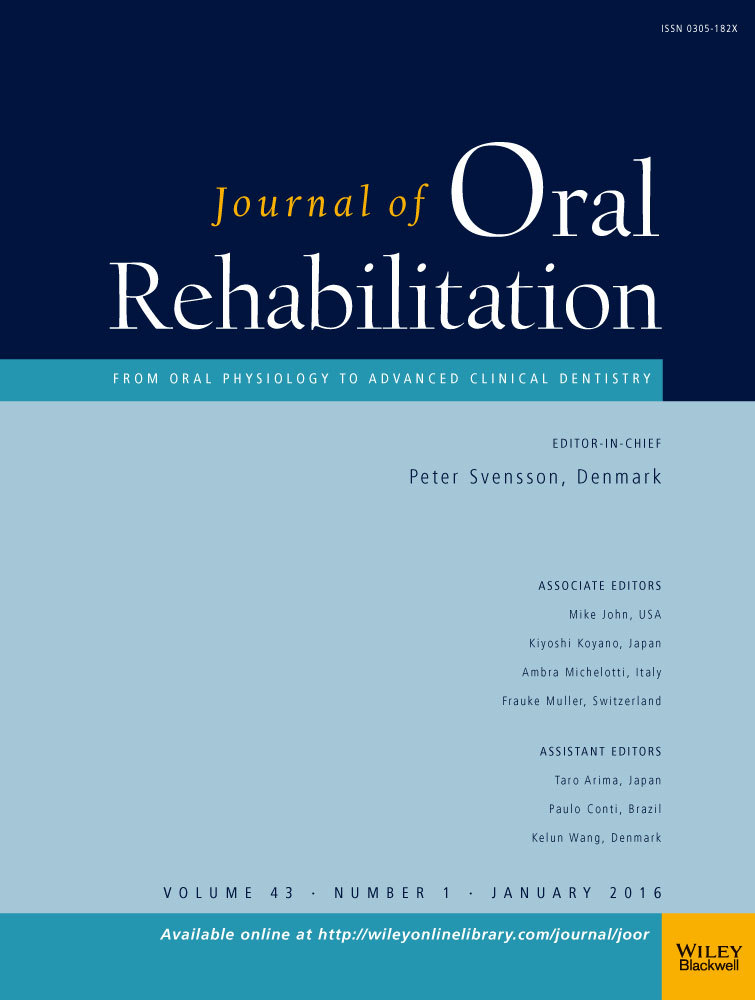
Acupuncture for pain, mandibular function and oral health‐related quality of life in patients with masticatory myofascial pain: A randomised controlled trial
2020 Jul 31 Journal of Oral Rehabilitation Salles‐Neto FT, Paula JS, Romero JGAJ, Almeida‐Leite CM
Although acupuncture was effective in pain reduction, non-specific factors may have influenced mandibular function and oral health-related quality of life improvements in both groups, and this needs to be further addressed.
Randomised Controlled Trial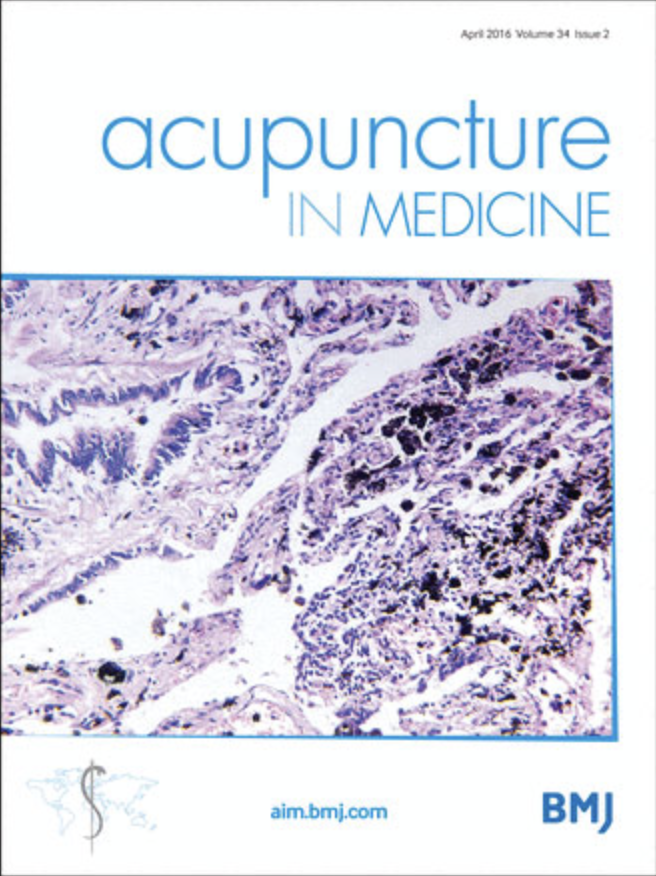
Acupuncture in the management of trigeminal neuralgia
2020 Jun Acupuncture in Medicine Edwards, J. W., & Shaw, V.
Systematic ReviewAcupuncture appears more effective than pharmacotherapy or surgery in the management of trigeminal neuralgia.
Acupuncture appears to be the least expensive therapeutic modality to deliver long-term in the management of trigeminal neuralgia, and our analysis indicated that it was less stressful to patients than pharmacotherapy or surgery.

Needling therapies in the management of myofascial pain of the masticatory muscles: A network meta‐analysis of randomised clinical trials
2020 Apr 22 Journal of Oral Rehabilitation Al‐Moraissi EA, Alradom J, Aladashi O, Goddard G, Christidis N
Based on this NMA, one can conclude that the effectiveness of needling therapy did not depend on needling type (dry or wet) or needling substance. The outcome of this NMA suggests that LA, BTX-A, granisetron and PRP hold some promise as injection therapies, but no definite conclusions can be drawn due to the low quality of evidence of the included studies. This NMA did not provide enough support for any of the needling therapies for TMD-M.
Meta-Analysis Masticatory Myofascial Pain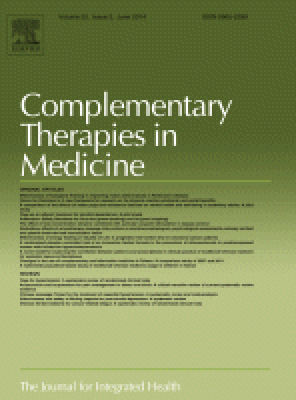
The effectiveness of acupuncture in the management of persistent regional myofascial head and neck pain: A systematic review and meta-analysis
2020 Mar Complementary Therapies in Medicine Farag AM, Malacarne A, Pagni SE, Maloney GE.
Systematic Review Meta-Analysis Neck Pain Neck, Shoulder, Arm & Wrist PainAcupuncture appears to be an effective and safe method to alleviate persistent myofascial head and neck pain.
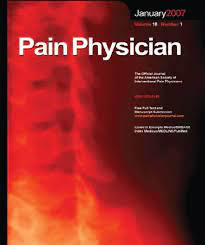
Acupuncture for Myofascial Pain Syndrome: A Network Meta-Analysis of 33 Randomized Controlled Trials
2017 Sep 20 Pain Physician Li X, Wang R, Xing X, Shi X, Tian J, Zhang J, et al.
Meta-AnalysisThe existing evidence suggests that most acupuncture therapies, including acupuncture combined with other therapies, are effective in decreasing pain and in improving physical function.
Research insights are moderated by the Research Hub team and offer an at-a-glance overview of interesting research findings.

2020 Acupuncture in Medicine
Acupuncture appears to be the least expensive therapeutic modality to deliver long-term in the management of trigeminal neuralgia, and our analysis indicated that it was less stressful to patients than pharmacotherapy or surgery.
Systematic Review
Acupuncture in the management of trigeminal neuralgia
Edwards, J. W., & Shaw, V.

2020 Acupuncture in Medicine
Acupuncture appears more effective than pharmacotherapy or surgery in the management of trigeminal neuralgia.
Systematic Review
Acupuncture in the management of trigeminal neuralgia
Edwards, J. W., & Shaw, V.

2020 Complementary Therapies in Medicine
Acupuncture appears to be an effective and safe method to alleviate persistent myofascial head and neck pain.
Systematic Review Neck Pain Neck, Shoulder, Arm & Wrist Pain
The effectiveness of acupuncture in the management of persistent regional myofascial head and neck pain: A systematic review and meta-analysis
Farag AM, Malacarne A, Pagni SE, Maloney GE.

2017 Pain Physician
The existing evidence suggests that most acupuncture therapies, including acupuncture combined with other therapies, are effective in decreasing pain and in improving physical function.
Meta-Analysis
Acupuncture for Myofascial Pain Syndrome: A Network Meta-Analysis of 33 Randomized Controlled Trials
Li X, Wang R, Xing X, Shi X, Tian J, Zhang J, et al.
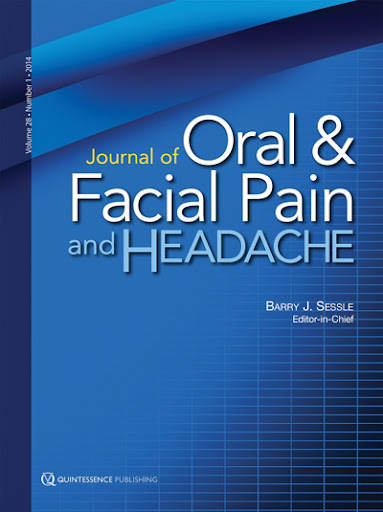
2017 Journal of Oral & Facial Pain and Headache
Acupuncture yielded results similar to those observed in groups treated with occlusal splints for pain in myofascial temporomandibular disorder.
Systematic Review
Acupuncture in Temporomandibular Disorder Myofascial Pain Treatment: A Systematic Review
Ana Carla Bezerra De Carvalho Justo Fernandes, DDS, MSc/Dayanne Monielle Duarte Moura, DDS, MSc/Laura Géssica Dantas Da Silva, DDS, et al.
Review Articles
Review articles summarise and critically evaluate the current state of research on a specific topic or field by synthesising multiple primary research studies.

Acupuncture in the management of trigeminal neuralgia
2020 Jun Acupuncture in Medicine Edwards, J. W., & Shaw, V.
Systematic ReviewAcupuncture appears more effective than pharmacotherapy or surgery in the management of trigeminal neuralgia.
Acupuncture appears to be the least expensive therapeutic modality to deliver long-term in the management of trigeminal neuralgia, and our analysis indicated that it was less stressful to patients than pharmacotherapy or surgery.
Research mainly from UK, thus with safer and cost effective according to NHS guidelines. — 10 Sep 2021

The effectiveness of acupuncture in the management of persistent regional myofascial head and neck pain: A systematic review and meta-analysis
2020 Mar Complementary Therapies in Medicine Farag AM, Malacarne A, Pagni SE, Maloney GE.
Systematic Review Meta-Analysis Neck Pain Neck, Shoulder, Arm & Wrist PainAcupuncture appears to be an effective and safe method to alleviate persistent myofascial head and neck pain.

Manual Acupuncture for Myofascial Pain Syndrome: A Systematic Review and Meta-Analysis
2017 Aug Acupuncture in Medicine Wang R, Li X, Zhou S, Zhang X, Yang K, Li X
Through stimulation of MTrPs, MA might be efficacious in terms of pain relief and reduction of muscle irritability in MPS patients. Additional well-designed/reported studies are required to determine the optimal number of sessions for the treatment of MPS.
Systematic Review Meta-Analysis
Acupuncture in Temporomandibular Disorder Myofascial Pain Treatment: A Systematic Review
2017 Jul Journal of Oral & Facial Pain and Headache Ana Carla Bezerra De Carvalho Justo Fernandes, DDS, MSc/Dayanne Monielle Duarte Moura, DDS, MSc/Laura Géssica Dantas Da Silva, DDS, et al.
Systematic ReviewAcupuncture yielded results similar to those observed in groups treated with occlusal splints for pain in myofascial temporomandibular disorder.
small sample sizes and short-term follow-up periods — 11 Sep 2021

Acupuncture therapy in the management of the clinical outcomes for temporomandibular disorders
2017 Mar Medicine Wu, Jun-Yi MD; Zhang, Chao MD; Xu, Yang-Peng MM; Yu, Ya-Yu MD; Peng, Le PhD; Leng, et al.
Systematic Review Meta-Analysis Temporomandibular Disorders Facial ConditionsAcupuncture therapy is effective in reducing the degree of pain in patients with temporomandibular disorders, especially those with myofascial pain symptoms.
Clinical Trials
Clinical trials are research studies that involve people and are conducted to evaluate the safety and efficacy of new treatments or interventions, such as drugs, medical devices, or behavioural therapies.
Study Protocols
Published study protocols are detailed plans that outline the objectives, methodology, statistical analyses, and organisation of a research study that have been made publicly available for others to review and use as a reference.
Presentation Slides

Systematic Review
Acupuncture appears to be the least expensive therapeutic modality to deliver long-term in the management of trigeminal neuralgia, and our analysis indicated that it was less stressful to patients than pharmacotherapy or surgery.
Edwards, J. W., & Shaw, V.

Systematic Review
Acupuncture appears more effective than pharmacotherapy or surgery in the management of trigeminal neuralgia.
Edwards, J. W., & Shaw, V.

Systematic Review
Acupuncture appears to be an effective and safe method to alleviate persistent myofascial head and neck pain.
Farag AM, Malacarne A, Pagni SE, Maloney GE.

Meta-Analysis
The existing evidence suggests that most acupuncture therapies, including acupuncture combined with other therapies, are effective in decreasing pain and in improving physical function.
Li X, Wang R, Xing X, Shi X, Tian J, Zhang J, Ge L, Zhang J, Li L, Yang K.

Systematic Review
Acupuncture yielded results similar to those observed in groups treated with occlusal splints for pain in myofascial temporomandibular disorder.
Ana Carla Bezerra De Carvalho Justo Fernandes, DDS, MSc/Dayanne Monielle Duarte Moura, DDS, MSc/Laura Géssica Dantas Da Silva, DDS, MSc/Erika Oliveira De Almeida, DDS, MSc, PhD/Gustavo Augusto Seabra Barbosa, DDS, MSc, PhD

Systematic Review
Acupuncture therapy is effective in reducing the degree of pain in patients with temporomandibular disorders, especially those with myofascial pain symptoms.
Wu, Jun-Yi MD; Zhang, Chao MD; Xu, Yang-Peng MM; Yu, Ya-Yu MD; Peng, Le PhD; Leng, Wei-Dong PhD; Niu, Yu-Ming PhD; Deng, Mo-Hong PhD
Executive Summary
Write an executive summary in the form of a blog article on the topic of "Research into Chinese medicine treatment for Myofascial pain" summarising the research below and using language that can be easily understood by patients and avoiding medical jargon using a professional and caring tone of voice.
Write an executive summary in the form of a blog article on the topic of "Researched Chinese medicine treatments for Myofascial pain" summarising the research below in an objective and easy to understand way, and using language that can be easily understood by patients. Group the article into Chinese medicine treatments first, followed by nutrition and other treatments. Avoid using medical jargon and use a professional and caring tone of voice.
Write me a concise but easy to understand executive summary on the topic of "Chinese medicine treatments for Myofascial pain" based on the following research that I will give you. Your summary should be 2 paragraphs long in Australian English spelling and include references to the studies.
A Systematic Review published in 2020 in the journal Acupuncture in Medicine found that Acupuncture appears to be the least expensive therapeutic modality to deliver long-term in the management of trigeminal neuralgia, and our analysis indicated that it was less stressful to patients than pharmacotherapy or surgery. Acupuncture also had fewer mean reported side effects compared with surgery and pharmacotherapy, and the lowest cost; after 5 years, the cost of acupuncture was estimated to be £750, compared to £1507.73 for carbamazepine and £4878.42 for microvascular decompression. Acupuncture was the least stressful according to the Holmes and Rahe’s Social Readjustment Rating Scale (SRRS) (53 points), whereas surgery was second most stressful (153 points) and pharmacotherapy was the most stressful intervention to patients (217 points).
A Systematic Review published in 2020 in the journal Acupuncture in Medicine found that Acupuncture appears more effective than pharmacotherapy or surgery in the management of trigeminal neuralgia. Acupuncture appears more effective than pharmacotherapy or surgery. Statistical analysis of side effects was not possible due to inconsistent reporting protocols, but the data suggest that acupuncture is considerably safer than pharmacotherapy or surgery. Acupuncture also appears to be the least expensive therapeutic modality to deliver long-term (65 weeks onwards), and our analysis indicated that it was less stressful to patients than pharmacotherapy or surgery. Further study into these areas and the practicality of its availability in the UK National Health Service (NHS) and other health systems is recommended.
A Systematic Review published in 2020 in the journal Complementary Therapies in Medicine found that Acupuncture appears to be an effective and safe method to alleviate persistent myofascial head and neck pain. To investigate the impact of acupuncture on persistent myofascial head and neck pain, only randomized controlled clinical trials were considered. These studies were hunted in a variety of databases, including PubMed, Ovid Medline, Embase, Google Scholar, and the Cochrane Library, in addition to a manual search. The main metric used for outcome measurement was the comparison of the mean pain intensity score on the Visual Analogue Scale (VAS) between the acupuncture and sham-needling/no intervention groups. Additionally, safety data and adherence rate were looked into. The key findings from the gathered randomized controlled clinical trials showed a decrease in the Visual Analogue Scale pain intensity scores in the acupuncture group when compared with the sham-needling/no intervention group. Only four trials were included in the concluding meta-analysis, which showed a substantial difference in pain intensity between the acupuncture and sham-needling/no intervention groups. Overall, the results demonstrated promising safety levels, evidenced by low side effects/withdrawal rates. However, the studies were inconsistent in the way they reported outcomes.
A Meta-Analysis published in 2017 in the journal Pain Physician found that The existing evidence suggests that most acupuncture therapies, including acupuncture combined with other therapies, are effective in decreasing pain and in improving physical function. Thirty-three trials with 1,692 patients were included. Patients were allocated to 22 kinds of interventions, of which dry needling and manual acupuncture was the most frequently investigated intervention. Compared with placebo-sham acupuncture, scraping combined with warming acupuncture and moxibustion was found to be more effective for decreasing pain intensity; miniscalpel-needle was more effective for increasing the PPT; trigger points injection with bupivacaine was associated with the highest risk of adverse event; and only EA showed a significant difference in the ROM.
A Systematic Review published in 2017 in the journal Journal of Oral & Facial Pain and Headache found that Acupuncture yielded results similar to those observed in groups treated with occlusal splints for pain in myofascial temporomandibular disorder. A total of four randomized clinical trials using acupuncture (traditional, trigger point, and laser) for TMD treatment met the eligibility criteria and were included. Although the studies featured small sample sizes and short-term follow-up periods, acupuncture yielded results similar to those observed in groups treated with occlusal splints and were significantly superior than those obtained from placebo acupuncture–treated groups. Despite the weak scientific evidence supporting its efficacy, acupuncture treatment appears to relieve the signs and symptoms of pain in myofascial TMD. More controlled and randomized clinical trials with larger sample sizes are needed in this field of research to verify these initial findings.
A Systematic Review published in 2017 in the journal Medicine found that Acupuncture therapy is effective in reducing the degree of pain in patients with temporomandibular disorders, especially those with myofascial pain symptoms. This study compared the clinical effectiveness of acupuncture therapy in TMD patients through the meta-analysis of published results. Our results indicate that acupuncture therapy penetrating the skin has greater effectiveness and reduces the pain degree to a greater extent, especially myofascial pain symptoms, compared with both sham nonpenetrating acupuncture and sham laser therapy.
Moderation Tools
Topic
Sign In
Users not signed in are limited to viewing the 5 most recent items of content.
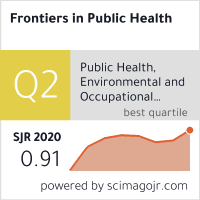
Research mainly from UK, thus with safer and cost effective according to NHS guidelines. — 10 Sep 2021